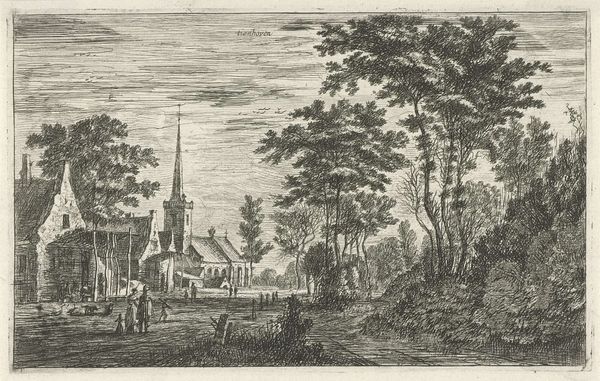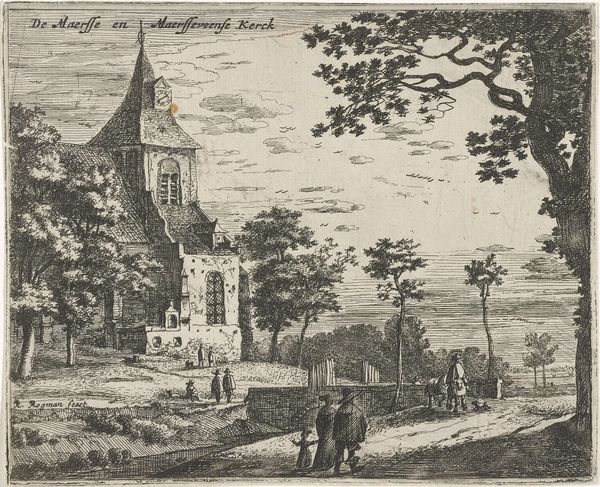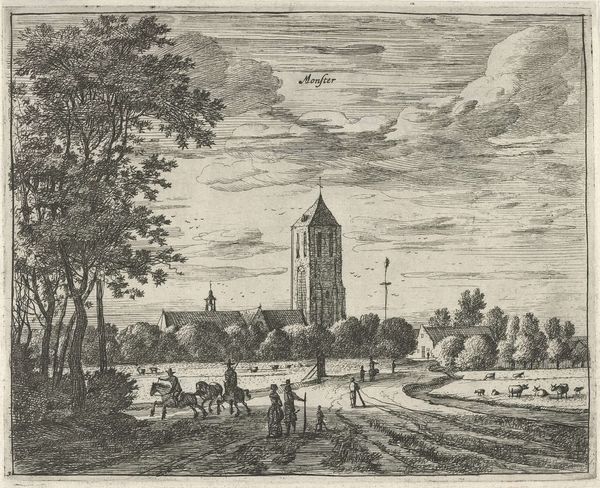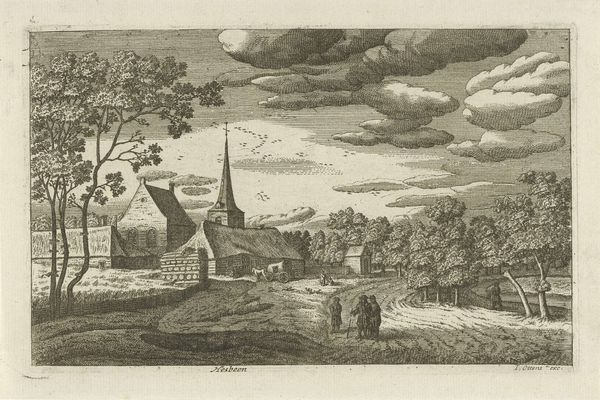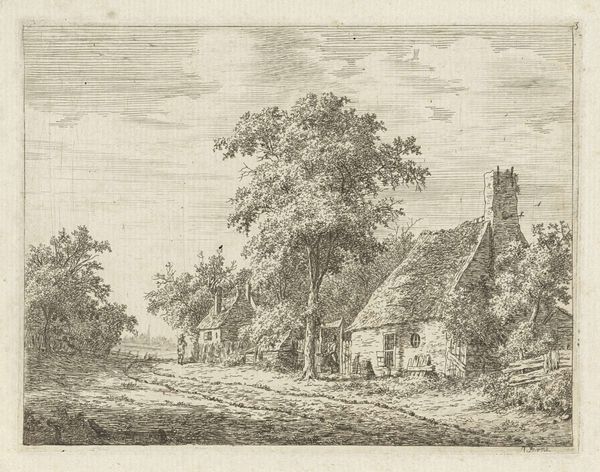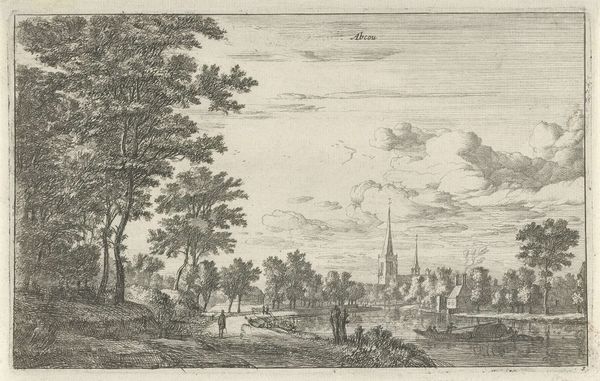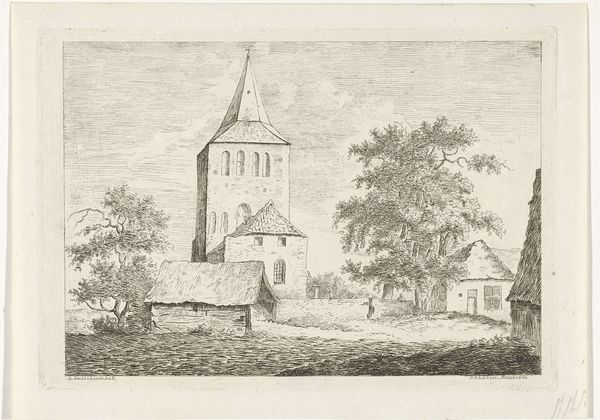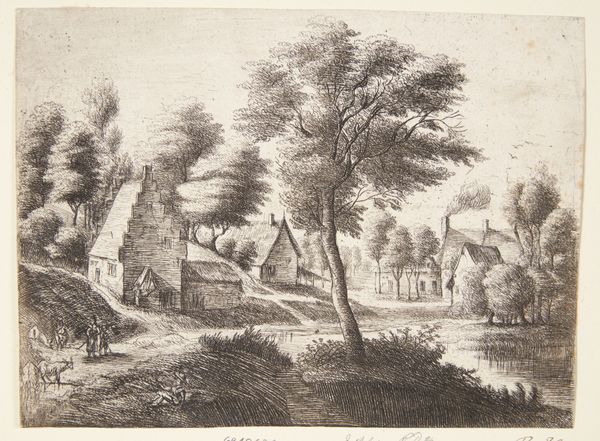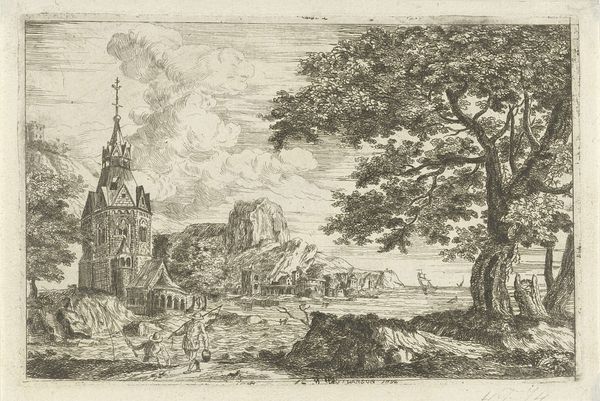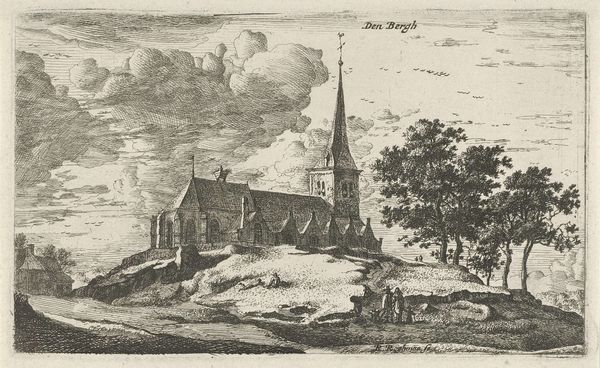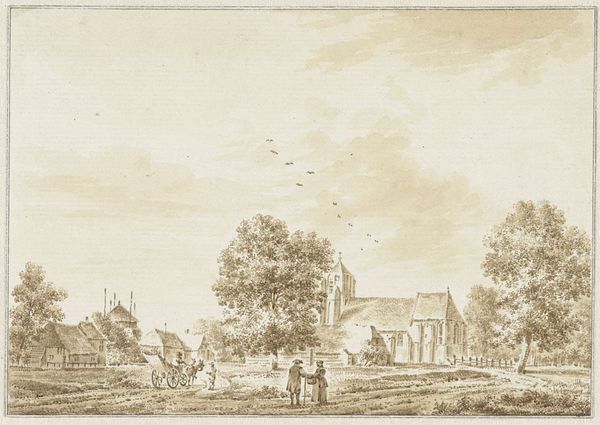
print, etching
#
dutch-golden-age
# print
#
etching
#
landscape
#
genre-painting
Dimensions: height 133 mm, width 167 mm
Copyright: Rijks Museum: Open Domain
Curator: Before us is "Gezicht op Velsen," a Dutch Golden Age etching attributed to Roelant Roghman, dating from approximately 1637 to 1677. It's currently held at the Rijksmuseum. Editor: It has an understated quality. The textures, the reflection of light in the water...it creates a compelling tonal unity despite the simple composition. Curator: Indeed. Roghman, while perhaps lesser known than some of his contemporaries, provides a vital visual document. His landscapes often capture villages, churches, and rural life, offering insight into the social fabric of 17th-century Netherlands. Here, the prominent church set against a small gathering and dilapidated buildings behind asks us to consider issues of religion, community, and the changing landscape due to social progress. Editor: Yes, the semiotics of space is key. Notice how the church dominates the visual field, but the inclusion of daily life prevents it from becoming too sanctified. And the ruined building behind suggests a sort of entropy—the passage of time working against these sacred places. The stark tonal contrasts pull you in! Curator: Absolutely. One must consider the implications of the church as a center of patriarchal power, reflecting societal structures of gender and religion in the 17th century, when the roles were heavily structured. How does Roghman depict, even unconsciously, those embedded biases in a seemingly simple village scene? Editor: His treatment of the surface creates its own kind of meaning. Look at the almost frenetic detail in the trees versus the calmness reflected in the pool of water. It offers a dialogue between controlled observation and a kind of lyrical representation. Curator: Considering the impact of the Eighty Years' War and its impact on daily life at this time helps illuminate how this scene can show a nation recovering, adapting, and also trying to reassert its cultural identity and social structures after enduring much adversity and conflict. Editor: These careful aesthetic choices allow viewers across centuries to experience and process the subject matter through light, shadow, shape and form—rather than pure historical reportage. It offers a deeper mode of seeing. Curator: Precisely! Roghman gives us not merely a picture of Velsen, but a glimpse into a period of transformation, of cultural identity formation, and of the complex interplay of power dynamics during the Dutch Golden Age. Editor: A close look can give us all a renewed way of thinking and experiencing!
Comments
No comments
Be the first to comment and join the conversation on the ultimate creative platform.
